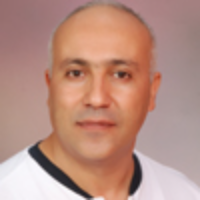Differentiation of the Non-dipping Blood Pressure Phenotype in Obstructive Sleep Apnea: An Observational Study
Published on: 15th May, 2025
Background: Absence of nocturnal decrease in Blood Pressure (BP) (“non-dipping”) has been shown to be a strong and independent predictor of cardiovascular events, target organ damage, cardiovascular sequela and cardiovascular mortality. Obstructive Sleep Apnea (OSA) has been associated with non-dipping with an estimated prevalence of approximately 50%, but factors associated with non-dipping in OSA patients remain poorly understood. In this study, we examined clinically relevant variables associated with non-dipping in OSA.Methods: Patients (n = 35) undergoing overnight valuation for OSA, laboratory-based polysomnography, structured clinical interviews, and comprehensive metabolic and anthropometric evaluations, and ambulatory BP monitoring for 24 hours. Patients were classified into a) dipping BP group or b) non-dipping BP group, based on (a) a nocturnal systolic BP decrease of 10% - 20% or (b) a systolic BP decrease of < 10%. Results: Patients had moderate and severe OSA (AHI = 34.8 ± 29.1), and 42.9% demonstrated a non-dipping BP pattern. The severity of OSA measures did not differ between dipping group and non-dipping group. However, Wake after Sleep Onset (WASO) and chronicity of insomnia predicts non-dipping BP independent of demographics, sleep stages, anthropometrics, metabolic measures, or arterial stiffness. Conclusion: These findings contribute to a better understanding of the cardiovascular impacts of OSA and indicate that sleep quality should be incorporated into clinical assessments and management of OSA patients.
A Systematic Review of Advancement in Gait Analysis Techniques
Published on: 16th May, 2025
The examination and the survey of how a person moves, particularly the way of life of walking and running. It entails studying and quantifying a person's gait in terms of their stride length, cadence, foot position, and movement of various body joints. Wearable technology makes it possible to monitor the gait pattern continually while moving about freely. The direction line, gait line, foot line, foot angle, principle line, step length, step breadth, and displacement value obtained from the gyro and accelerated sensors coupled to the shank and thigh are all used to analyze the gait pattern. There has been a lot of research on this method of recognizing people by the way they walk.The two most crucial facts are that OpenPose, a 2D multi-person posture estimation library, can detect 135 critical body locations without the requirement for fiducial markers, and that smartphone cameras can detect the gait pattern without the use of physical markers. In addition, lower extremity sagittal joint angles, spatiotemporal gait parameters, and timings of gait events were independently determined for motion capture. Gait analysis systems use portable, readily available cameras to measure gait characteristics. The pace of gait, length of steps, time of steps, cadence of steps, and the period of stance are the most crucial factors. Recently, the top standard for the examination of gait was used to evaluate the schemes based on two camera usage to evaluate the framework of different gait patterns.The precision of the examination of SCA is being increased by data scientists through the development of AI-based computer algorithms. To increase individualization, Bertillon measured the body and faces of several convicts in 1883.
Survey on the Underutilization of Forensic Expertise in India: Examining the Dominance of Law Enforcement in Evidence Collection and Investigations
Published on: 22nd May, 2025
Forensic science can significantly enhance criminal investigation equity and accuracy. In India, though, forensic experts remain underutilized as case investigations are predominantly performed by law enforcement agencies. This article documents findings of a survey of 230 respondents half of them being forensic experts and other non-forensic respondents like law enforcers exhibiting a wide perceptual gap. While forensic experts emphasize the need for independent intervention so that objective outcomes would be achieved, police respondents strongly favor conventional investigation methods. Systemic barriers like training constraints, availability limitations, and formalization of processes also discourage effective integration of forensic science. The research highlights efforts at policy reform that accord forensic experts a more active role, thereby strengthening the credibility and objectivity of India’s justice system.
Unveiling Healthcare Disparities: Social Exclusion and Public Health Challenges in Rural Ganderbal, Kashmir
Published on: 22nd May, 2025
This study explores the dynamics of social exclusion in healthcare settings within the rural Ganderbal district of Kashmir, focusing on the availability of health facilities and the health-seeking behaviors of socially disadvantaged populations. Through a mixed-methods approach, combining quantitative data from interviews and qualitative insights from observation, the research reveals significant disparities in healthcare access between rural and urban areas. Key findings indicate that rural residents face exclusion due to a scarcity of hospitals, unavailability of 24-hour medical staff, inadequate infrastructure, staffing shortages, and systemic biases, compounded by environmental and occupational challenges. Communicable diseases predominate, with majority of respondents affected, and traditional healers and medical shops serve as primary care sources over formal institutions like government hospitals. Socio-economic factors, including low literacy, reliance on agriculture, and poverty, exacerbate these issues. The study highlights higher infant mortality and malnutrition rates in rural areas compared to urban centers, underscoring the need for attitudinal shifts among healthcare providers and systemic improvements in infrastructure and policy to enhance health equity. By addressing an underexplored gap in rural health research in India, this work aims to inform strategies for inclusive healthcare delivery, potentially yielding broader societal benefits through improved well-being and demographic dividends.
Impact of Refractive Error Correction on Vision Related Quality of Life in School-Aged Children-A Prospective Interventional Study
Published on: 23rd May, 2025
Aim: To compare the vision related quality of life before and after prescription of refractive glasses in school-aged children. Design: A prospective, comparative, and hospital-based interventional study was conducted at the Regional Institute of Ophthalmology, PGIMS, Rohtak between May 2021-May 2022. It involved assessment of vision-related quality of life (VRQoL) in 200 school-going children of the 5-16 age group, then comparing outcomes in children with URE versus those corrected with eyeglasses. Those with significantly low visual acuity (≤ 6/9) on Snellen’s were enrolled in the study after obtaining written informed consent from parents. The Modified SREEQ was used to assess VRQoL. Various parameters of comparison included age, gender, demography, education, and improvement in VRQoL within individual study groups over time. Comparison was done before and after using prescription refractive eyeglasses with a follow-up period of 3 months. Results: The correction amongst hypermetropes, 40 out of total 200 students (20%), correction among myopes (153 of 200 students), correction amongst students with astigmatism (7 out of 200 students) resulted in changing categories from mild/moderate/severe visual impairment to normal category of visual acuity i.e., 6/6 on immediate correction with refractive glasses prescribed to them post refraction. Students with astigmatism showed an improvement in symptoms like distorted images post-refractive correction at 3 months. Thus, proving a positive role of refractive eyeglasses in reducing the burden of refractive errors in our study population and improving the visual outcome. Conclusion: VRQoL was better in students after they got their refractive errors corrected with prescription eyeglasses at 3 months as compared to their QoL evaluated at their first visit to our centre with URE. This study focused on having a holistic approach towards improvement in QoL by taking into consideration the academic, psychological, cost-effectiveness aspects of VRQoL among students in the age group 5-16 years old.
A Short Synthesis Concerning Biological Effects and Equivalent Doses in Radiotherapy
Published on: 15th April, 2017
The limits of classical equivalent computation based on time, dose, and fractionation (TDF) and linear quadratic models have been known for a long time. Medical physicists and physicians are required to provide fast and reliable interpretations regarding the delivered doses or any future prescriptions relating to treatment changes. In this letter, we propose an outline related to the different models usable for equivalent and biological doses that are likely to be the most appropriate. The used methodology is based on: the linear-quadratic-linear model of Astrahan, the repopulation effects of Dale, and the prediction of multi-fractionated treatments of Thames.
Redefining Biotechnology for the Global South: The Role of Synthetic Biology and Computational Tools
Published on: 26th May, 2025
Biotechnology has always played an important role in tackling global concerns, particularly in the Global South, where socioeconomic gaps sometimes stymie scientific progress. Recent advances in synthetic biology and computational technologies have the potential to revolutionize biotechnology in these locations. Synthetic biology allows for the creation and manipulation of biological systems, with promise applications in healthcare, agriculture, and environmental control. Computational methods such as machine learning and artificial intelligence help to optimize synthetic biology processes, enabling innovations that are suited to local requirements. The combination of these cutting-edge technologies with traditional biotechnological techniques has the potential to dramatically improve the Global South's ability to solve issues such as disease outbreaks, food security, and sustainable development. This abstract outline the critical intersections of synthetic biology and computational advancements and their potential to empower the Global South, highlighting the need for supportive policies and capacity-building initiatives to maximize their impact.
Browse by Subjects
Chemistry Group Journals
Pharma Group Journals
Mathematics & Physics Group Journals
Clinical Group Journals
- Archives of Food and Nutritional Science
- Annals of Dermatological Research
- International Journal of Clinical Microbiology and Biochemical Technology
- Journal of Advanced Pediatrics and Child Health
- Journal of Pulmonology and Respiratory Research
- Insights in Clinical and Cellular Immunology
- International Journal of Clinical Anesthesia and Research
- Journal of Clinical Intensive Care and Medicine
- Journal of Clinical, Medical and Experimental Images
- Journal of Neuroscience and Neurological Disorders
- Insights in Veterinary Science
- Journal of Stem Cell Therapy and Transplantation
- Archives of Asthma, Allergy and Immunology
- Journal of Child, Adult Vaccines and Immunology
- Archives of Cancer Science and Therapy
- Clinical Journal of Nursing Care and Practice
- Annals of Clinical Gastroenterology and Hepatology
- Journal of Hematology and Clinical Research
- Archives of Pathology and Clinical Research
- Annals of Clinical Hypertension
- Journal of Oral Health and Craniofacial Science
- International Journal of Clinical and Experimental Ophthalmology
- Journal of Radiology and Oncology
- Journal of Clinical Nephrology
- Archives of Clinical and Experimental Orthopaedics
- International Journal of Bone Marrow Research
- International Journal of Clinical Virology
- New Insights in Obesity: Genetics and Beyond
- Advanced Treatments in ENT Disorders
- Journal of Clinical Advances in Dentistry
- Insights on the Depression and Anxiety
- Heighpubs Otolaryngology and Rhinology
- Clinical Journal of Obstetrics and Gynecology
- Archives of Surgery and Clinical Research




